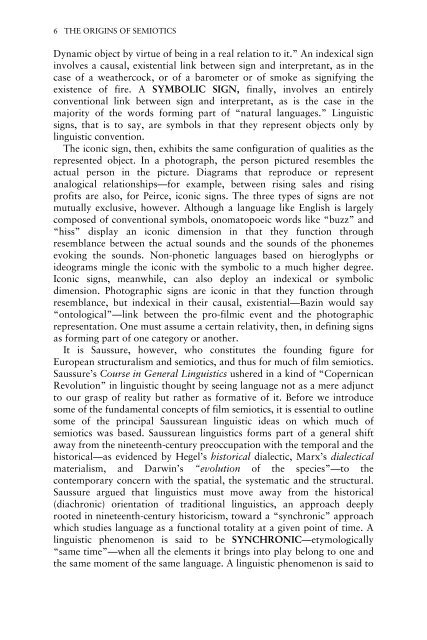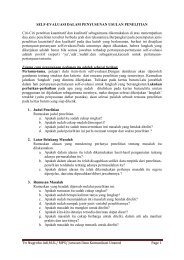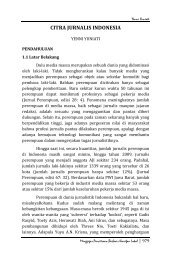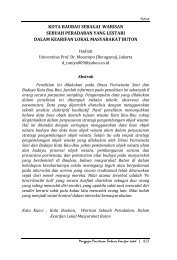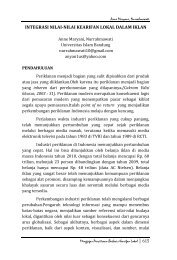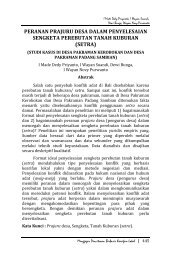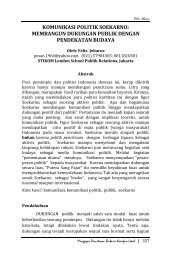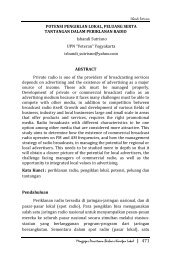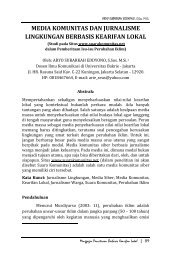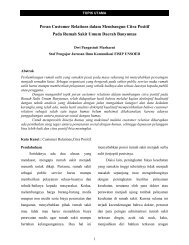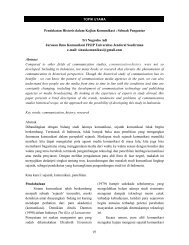New Vocabularies in Film Semiotics
New Vocabularies in Film Semiotics
New Vocabularies in Film Semiotics
Create successful ePaper yourself
Turn your PDF publications into a flip-book with our unique Google optimized e-Paper software.
6 THE ORIGINS OF SEMIOTICS<br />
Dynamic object by virtue of be<strong>in</strong>g <strong>in</strong> a real relation to it.” An <strong>in</strong>dexical sign<br />
<strong>in</strong>volves a causal, existential l<strong>in</strong>k between sign and <strong>in</strong>terpretant, as <strong>in</strong> the<br />
case of a weathercock, or of a barometer or of smoke as signify<strong>in</strong>g the<br />
existence of fire. A SYMBOLIC SIGN, f<strong>in</strong>ally, <strong>in</strong>volves an entirely<br />
conventional l<strong>in</strong>k between sign and <strong>in</strong>terpretant, as is the case <strong>in</strong> the<br />
majority of the words form<strong>in</strong>g part of “natural languages.” L<strong>in</strong>guistic<br />
signs, that is to say, are symbols <strong>in</strong> that they represent objects only by<br />
l<strong>in</strong>guistic convention.<br />
The iconic sign, then, exhibits the same configuration of qualities as the<br />
represented object. In a photograph, the person pictured resembles the<br />
actual person <strong>in</strong> the picture. Diagrams that reproduce or represent<br />
analogical relationships—for example, between ris<strong>in</strong>g sales and ris<strong>in</strong>g<br />
profits are also, for Peirce, iconic signs. The three types of signs are not<br />
mutually exclusive, however. Although a language like English is largely<br />
composed of conventional symbols, onomatopoeic words like “buzz” and<br />
“hiss” display an iconic dimension <strong>in</strong> that they function through<br />
resemblance between the actual sounds and the sounds of the phonemes<br />
evok<strong>in</strong>g the sounds. Non-phonetic languages based on hieroglyphs or<br />
ideograms m<strong>in</strong>gle the iconic with the symbolic to a much higher degree.<br />
Iconic signs, meanwhile, can also deploy an <strong>in</strong>dexical or symbolic<br />
dimension. Photographic signs are iconic <strong>in</strong> that they function through<br />
resemblance, but <strong>in</strong>dexical <strong>in</strong> their causal, existential—Baz<strong>in</strong> would say<br />
“ontological”—l<strong>in</strong>k between the pro-filmic event and the photographic<br />
representation. One must assume a certa<strong>in</strong> relativity, then, <strong>in</strong> def<strong>in</strong><strong>in</strong>g signs<br />
as form<strong>in</strong>g part of one category or another.<br />
It is Saussure, however, who constitutes the found<strong>in</strong>g figure for<br />
European structuralism and semiotics, and thus for much of film semiotics.<br />
Saussure’s Course <strong>in</strong> General L<strong>in</strong>guistics ushered <strong>in</strong> a k<strong>in</strong>d of “Copernican<br />
Revolution” <strong>in</strong> l<strong>in</strong>guistic thought by see<strong>in</strong>g language not as a mere adjunct<br />
to our grasp of reality but rather as formative of it. Before we <strong>in</strong>troduce<br />
some of the fundamental concepts of film semiotics, it is essential to outl<strong>in</strong>e<br />
some of the pr<strong>in</strong>cipal Saussurean l<strong>in</strong>guistic ideas on which much of<br />
semiotics was based. Saussurean l<strong>in</strong>guistics forms part of a general shift<br />
away from the n<strong>in</strong>eteenth-century preoccupation with the temporal and the<br />
historical—as evidenced by Hegel’s historical dialectic, Marx’s dialectical<br />
materialism, and Darw<strong>in</strong>’s “evolution of the species”—to the<br />
contemporary concern with the spatial, the systematic and the structural.<br />
Saussure argued that l<strong>in</strong>guistics must move away from the historical<br />
(diachronic) orientation of traditional l<strong>in</strong>guistics, an approach deeply<br />
rooted <strong>in</strong> n<strong>in</strong>eteenth-century historicism, toward a “synchronic” approach<br />
which studies language as a functional totality at a given po<strong>in</strong>t of time. A<br />
l<strong>in</strong>guistic phenomenon is said to be SYNCHRONIC—etymologically<br />
“same time”—when all the elements it br<strong>in</strong>gs <strong>in</strong>to play belong to one and<br />
the same moment of the same language. A l<strong>in</strong>guistic phenomenon is said to


